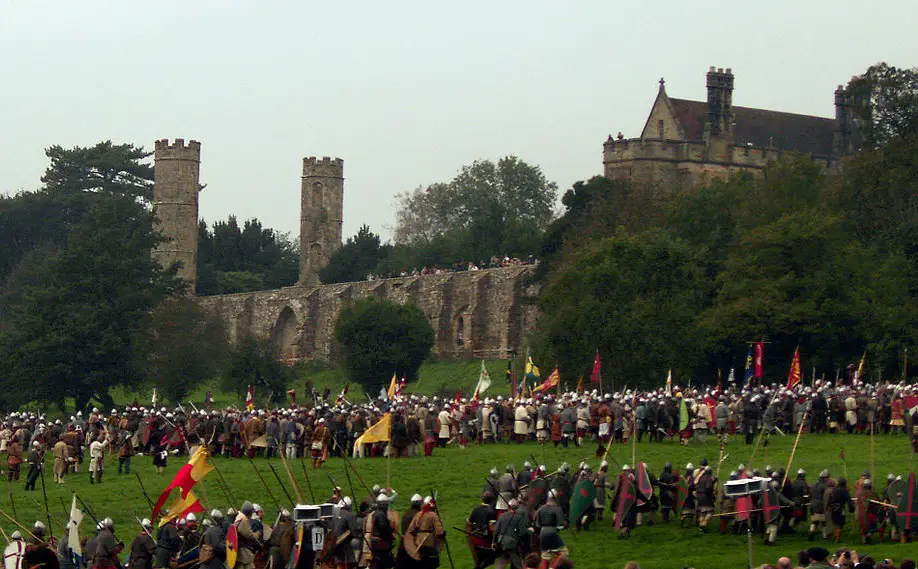The Battle of Hastings is regularly fought all over again by enthusiastic re-enactors, before large crowds of spectators. The problem is that they are depositing material that could compromise the archaeology of the historic site.
But now the University of Huddersfield’s Dr Glenn Foard – one of the world’s leading battlefield archaeologists – is developing a unique project designed to unearth whatever genuine material survives from 1066.

The first stage, likely to take place in spring 2015, would be to spend a week machining away the top layers of soil at a substantial area of the battlefield, in order to eliminate modern artefacts.
Then there would be a search for genuine remains from the battle of 1066.
An important dimension of the project would be public involvement. Trained archaeologists would carry out the actual survey, but there would be parallel sessions nearby, partly aimed at children and parents, which would provide insights into archaeology, including the use of metal detectors to survey a site.
“Now the challenge is on to find out what archaeology is there, before it suffers contamination from all the activities that are going on,” says Dr Foard. “Whether there is archaeology under the ground to be confused by the re-enactment activities, we don’t know yet.”
One of Dr Foard’s battlefield coups was to detect the true location of the Battle of Bosworth, where famously Richard III was slain in 1485.
The result of Dr Foard’s work found that the actual battle took place more than two miles from the site where it was traditionally thought to have been fought. However, as he collaborates with English Heritage to plan his investigation of Hastings, he is working on the assumption that the Battle of Hastings in 1066 was fought on its traditional site, even though there have been attempts to establish an alternative location.
“I have no reason to believe that any of the alternatives are likely,” said Dr Foard. “I will never say that they are impossible – not after my work on Bosworth – but all the evidence I saw when I looked at Bosworth suggested that it wasn’t fought on the traditional site. At Hastings, however, everything I have looked at tells me that the battle did take place on the generally accepted site.
University of Huddersfield – Header Image : WikiPedia






